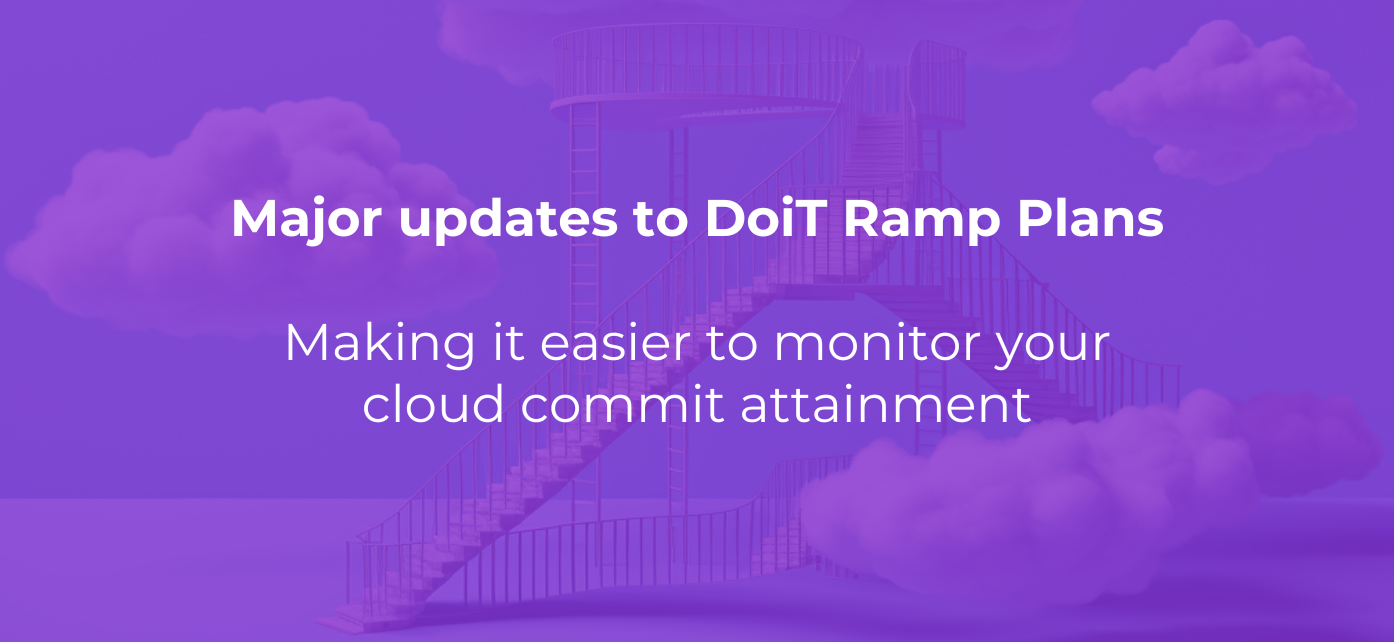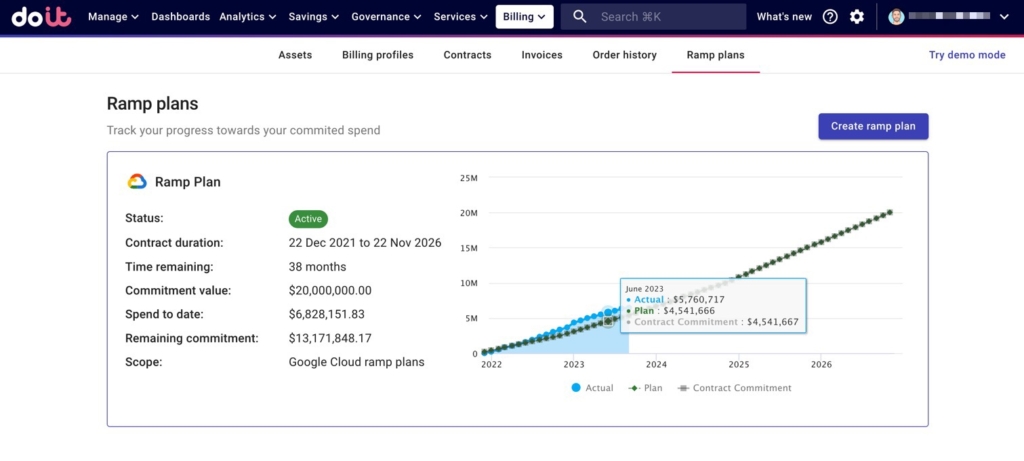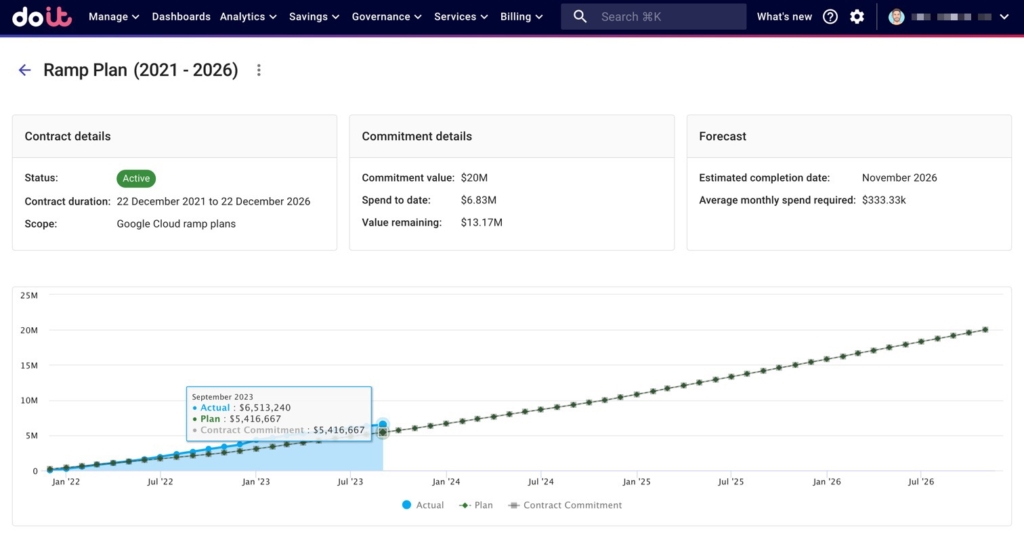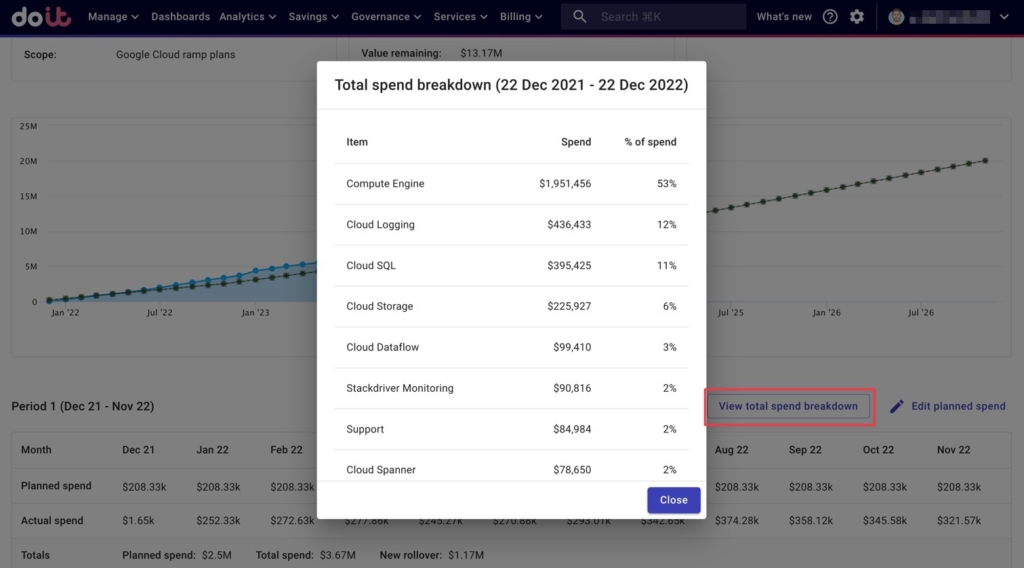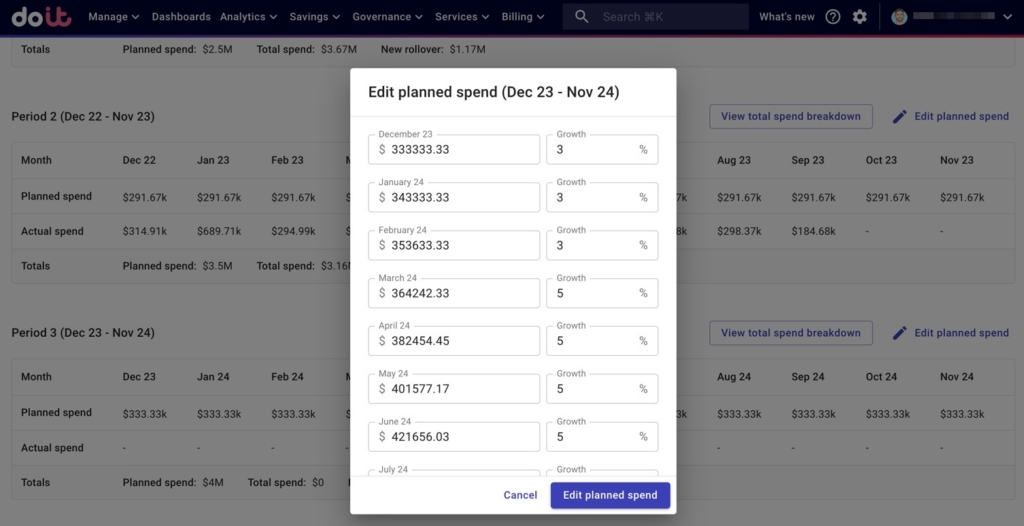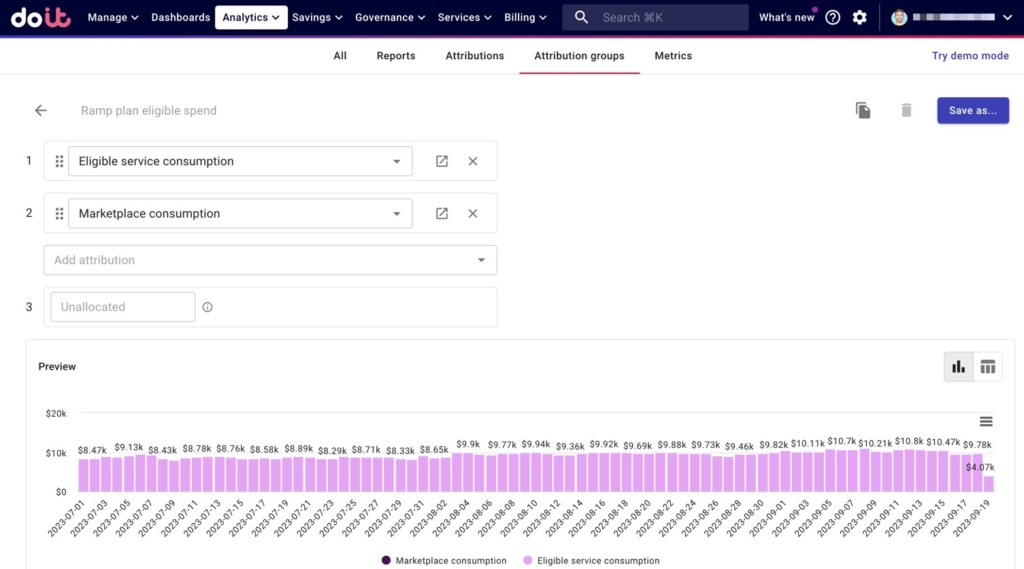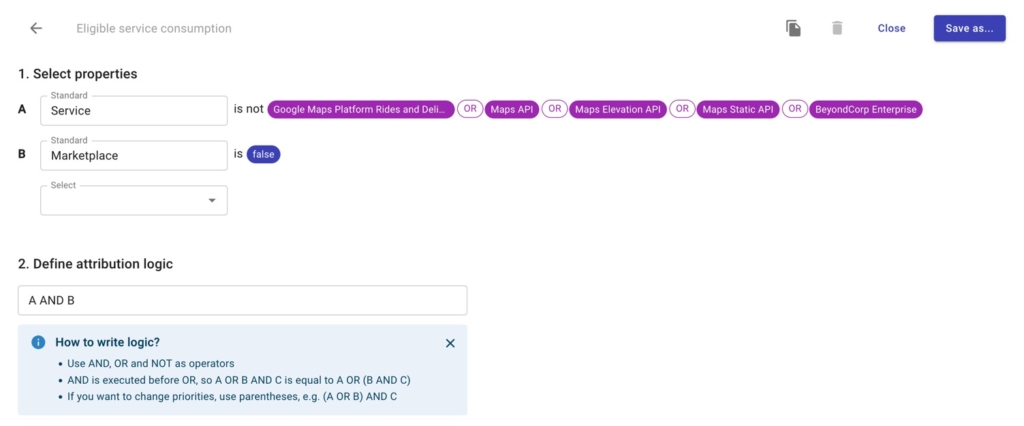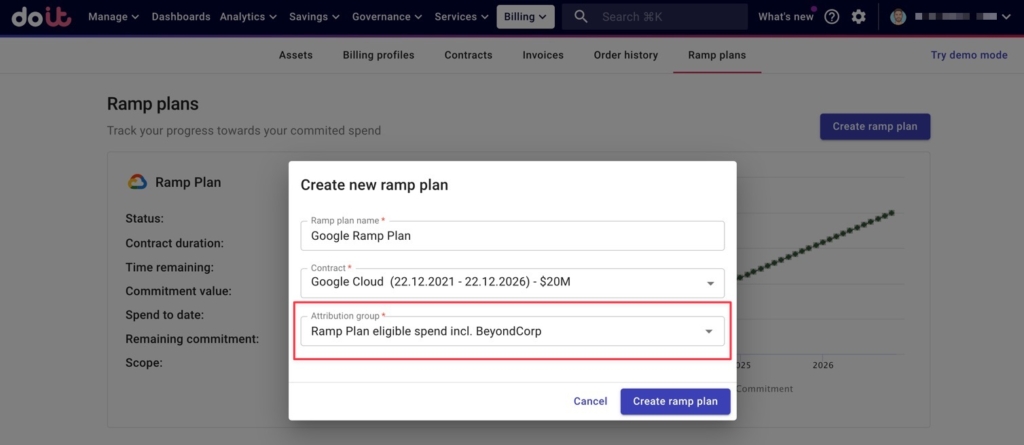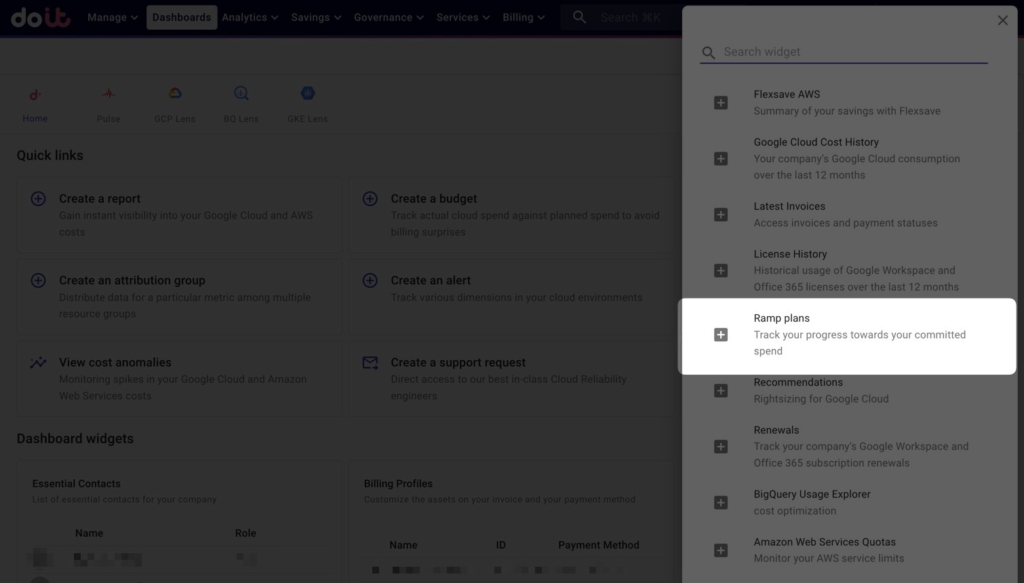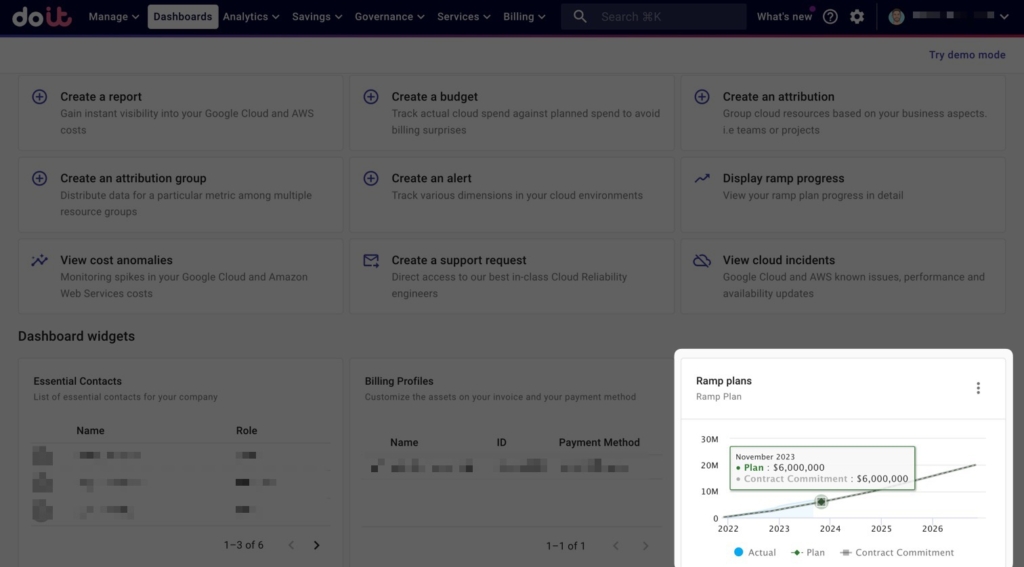When looking to reduce cloud costs, commercially-negotiated discounts are a great way to optimize cloud spend across all your services.
These are contractual agreements (“commit”, “EDP”, etc.) between you and the cloud provider that offer you long-term discounts in return for an annual or multi-year commitment to spend at least a certain amount of money with the cloud provider over the contractual period.
And much like how you’d monitor your consumption vs. a Savings Plan or Committed Use Discount, it’s important to keep a close eye on your commitment attainment.
However, we found that many were doing this manually in a spreadsheet. That’s why two years ago we released Ramp Plans, which help you proactively manage your spend against what you committed to.
And now we’re excited to announce major updates to DoiT Ramp Plans, making it even easier to understand where you stand against your commitment(s) and what’s driving your commitment drawdown!
Let’s dive into all of the updates — if video is more your thing, we’ve included our video update below.
Track your Ramp Plan progress better with a new UI
When you make a commitment, it’s crucial to keep track of your cloud spend vs. what you committed to for two main reasons:
- Undershoot your commitment without noticing ahead of time, and you’ll wind up having to pay the difference when you could’ve bridged the gap with some advance notice
- On the flip side, if it’s looking like you’ll meet your commitment ahead of schedule, you may want to begin negotiations around a new commit with even more favorable discounts
As such, we improved the UI to give you a better overview of your progress toward your commitment.
First, from the main Ramp Plans page you’ll now see an at-a-glance overview of all of your Ramp Plans and how you’re tracking vs. what you committed to spending.
Next, clicking into a Ramp Plan will give you additional information, including forecasts around when you’re expected to spend what you committed to and the average monthly spend you’ll need for the duration of your commitment.
Finally, by clicking on the “View total spend breakdown” button, you can view the top ten items driving your commitment drawdown.
Modify growth projections easily
When determining what amount to commit to spending, you’ll likely make some spend growth projections — it’s unlikely you’ll plan to spend the same amount over a multi-year span.
However, sometimes these plans can change. For instance, you might be seeing growth that is more than initially anticipated.
When this happens, you can edit your planned spend growth easily in your Ramp Plan. As shown below, after clicking the “Edit planned spend” button you just enter a growth percentage that makes sense for your business.
If needed, you can enter multiple numbers for different intervals in a period — for example, you anticipate lower growth during the winter holiday season and then expect things to ramp up afterward.
Easier-to-customize Ramp Plans
In the past, Ramp Plans were based on your invoice. This had a couple of downsides:
- Your current month’s Ramp Plan numbers wouldn’t be updated until the end of the month when your invoice was issued
- All billing in your invoice was counted toward the Ramp Plan, even if it wasn’t commit-eligible (i.e. Google Maps)
- Ramp Plans could only be associated with one billing profile, making it difficult to track ramp plan progress if you used multiple billing profiles for subsidiaries
Now, Ramp Plans are based on Attributions, giving you more flexibility when you need to customize the scope of your Ramp Plan.
By default, a Ramp Plan is scoped to a preset Attribution Group containing Attributions that represent 1) commit-eligible services, and 2) marketplace purchases.
While this Attribution Group covers 80-90% of use cases for commitments, if needed you can create your own Attribution Group and base your Ramp Plan on that instead.
For example, by default BeyondCorp Enterprise and Google Maps-related spend is not included in your commitment.
However, if you signed a deal where BeyondCorp did count against your commit drawdown, you (or your DoiT account manager) could easily factor that into your attainment in four steps:
- Clone the “Eligible service consumption” preset attribution
- Modify the attribution so that BeyondCorp Enterprise is not factored out anymore
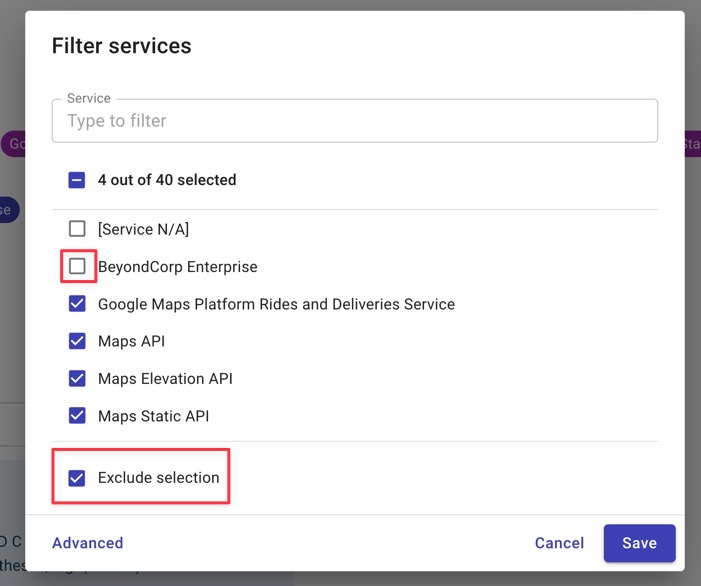
- Create a new Attribution Group that includes your modified “Eligible service consumption” attribution, and the “Marketplace consumption” attribution
- Select that Attribution Group when scoping your Ramp Plan
Ramp Plans widget for your dashboards
Finally, you can now view your Ramp Plan progress from your custom dashboards with the new Ramp Plans widget.
Just add it from the widget library and you’ll be able to quickly see your commit attainment right when you log into the DoiT Console.
If you want to examine your Ramp Plan more closely, clicking on the widget will take you to your Ramp Plan’s page.
Conclusion
By tracking your commit attainment you’ll stay on top of any opportunities to sign an early recommit with even better terms, or situations where you might be behind schedule.
Ramp Plans help you visualize, manage, and track your actual spend vs. your cloud commitments so you can make sure you spend what you committed to.
If you’re a DoiT customer with a commit deal already, view existing Ramp Plans or create a new one here.
Not a DoiT customer but interested in working with us? Get in touch!
